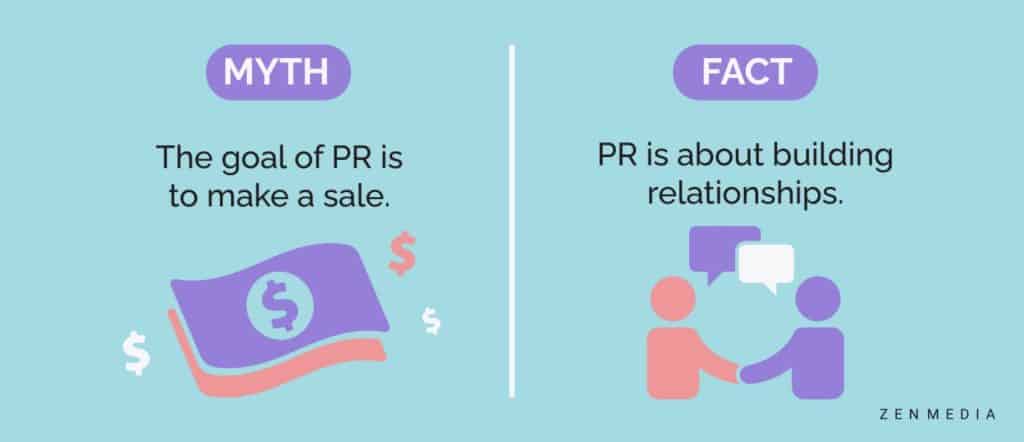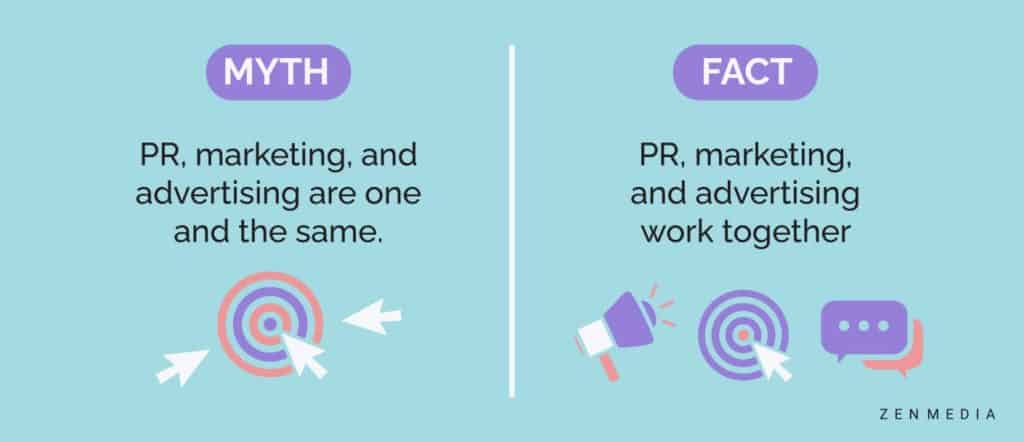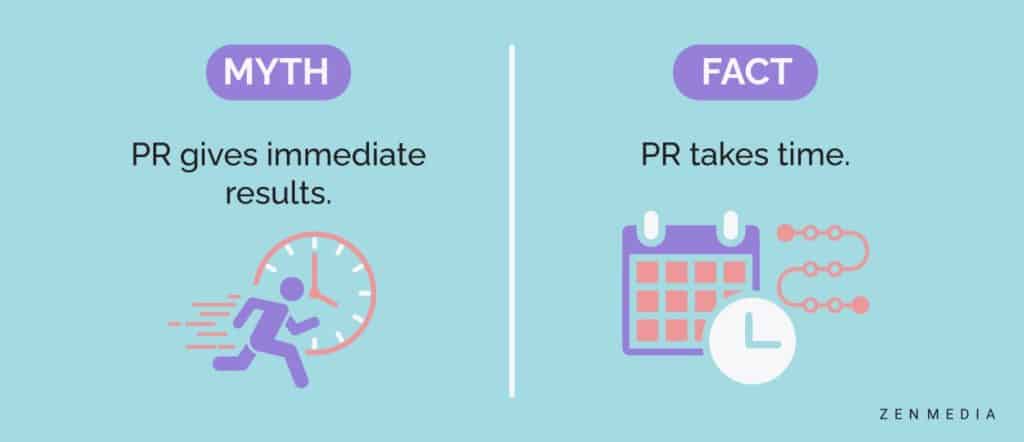Brands, marketers, and advertisers make many assumptions about PR strategy. They assume that it functions the same as marketing or advertising, and they often don’t understand what it means to create a realistic set of goals for public relations.
Our CEO Shama Hyder puts it simply:
“PR is important if you want to build trust with your customers.”
PR provides depth where marketing and advertising are the first lines of communication and the first ways you reach out to your prospects. Public relations helps brands communicate their core messages, values, and differentiators in a way that resonates with the public. It’s a recipe with multiple components: You need marketing and advertising to support your PR strategy, but PR takes marketing and advertising even further.
So why are people so mixed up about the functions of PR? Probably because there are a million misconceptions about the role of public relations. The market is constantly changing, so this confusion is understandable. What’s the function of PR in the digital world? First and foremost, PR is always going to be about building trust. In the digital world, the only difference is the timeline and the method.
Here are the most common misconceptions about PR and what you should think instead.
Myth: The goal of PR is to make a sale.
Most brands decide to work with a PR agency because they want to increase sales and grow their business. Every brand is worried about the bottom line. Without sales, they wouldn’t exist. But the goal of PR is not sales; it’s trust. The goal of B2B marketing is to make a sale, and the goal of PR is to build trust. These two goals work together to create better relationships between brands and consumers so that brands can make the sales they need and consumers can get the products and services they are looking for.
If you make sales the goal of your PR strategy, you’ll miss the mark. PR doesn’t work if it’s sales-y or driven by the bottom line.
Fact: PR is about building relationships.
PR works best when you focus on building relationships. This will look different depending on the industry that you are in, but the goal is always the same. Fostering personal relationships with your customers, media outlets, and other companies makes your brand relatable and worthy of attention. It’s the first way that you can connect with your customers.

Some brands focus their PR strategy or PR campaigns on the brand mission as a whole, like the value that the brand brings to the table. For example, a sustainable clothing brand might focus all of its PR on the mission of reducing waste. Other brands may choose to concentrate their PR strategy on the company’s leaders, showcasing their expertise and authority in the industry. Both methods can help brands build trust with customers.
Myth: PR, marketing, and advertising are one and the same.
Typical metrics for evaluating the success of digital campaigns do not translate to measures of PR success. Building trust in your brand takes time, and the customers who will support you in the long term are intelligent. Advertising runs on one-and-done sort of campaigns. Once the ad is live, you draw from the data, and that’s the end of the story. PR is a multi-step process that doesn’t work like an advertisement. You must invest in PR consistently over time to yield results.
That brings us to our next point.

Fact: PR, marketing, and advertising work together.
If you want an effective PR campaign, you also need an effective marketing and advertising strategy. The opposite is also true: If you want marketing and advertising to be effective, you also need PR. You’ll have better reach, more success, and a more significant impact if you share your message multiple different ways.
Myth: PR gives immediate results.
If your approach to PR relies on your expectation of immediate clicks, sales, and profits, you’ll be sorely disappointed. B2B PR takes time, and it isn’t a quick fix to a marketing problem or decreased sales. In today’s digital world, many brands expect that their PR strategy will mean instant results and clicks—this just isn’t true.
Fact: PR takes time.

More often than not, it can take weeks or months to have a successful pitch that yields results. This is because PR representatives spend time sending out your brand’s story to multiple outlets, reporters, and media platforms. It takes time to get a hit, but the wait is worth it. Crafting a compelling PR message also takes time, so don’t be surprised if you spend extra time with your public relations team to craft a message that reaches your audience. It can take time to get it right, but you’ll get better results when investing time, energy, and effort.
Myth: PR will get you on the front page of the New York Times or the cover of Time Magazine.
Have your eyes on the front page of a famous publication? It’s good to have goals, but those are a bit lofty. Most brands have high hopes that their PR team will get them placed in a top-tier magazine. We get it! That would be amazing. But getting a placement in one of those publications doesn’t necessarily mean your PR efforts have been successful. Not only is it difficult to get top-tier placements, but it also may not be the most effective strategy. Even if you do win a top-tier placement, don’t neglect the value of smaller publications targeted to your industry. Any and all positive media interactions will provide you with the foundation you need to reach bigger platforms.
Fact: Effective PR will get your brand placed in the most relevant and impactful publications (big and small).
Sometimes the best media hits aren’t the biggest, so don’t get caught up aiming for big platforms. Say yes to every media opportunity, and not just in the beginning. Keep your mind open to PR opportunities from smaller organizations and publications that are more targeted to your industry. Don’t build your media checklist around audience reach and the outlet’s notoriety alone. Instead, focus on the relevance of the media opportunity to your brand and story. Agreeing to media opportunities that are relevant and mutually beneficial is the key to expanding your brand.

Don’t fall into the trap of these common myths: You’re better than that! PR is a worthwhile investment for any brand, and it’s important to get it right. If you’re in the beginning stages of developing your digital marketing strategy and looking to hire a PR expert, now you know what to look for. A public relations expert will be able to tell you which publications are worth targeting and how to refine and hone your brand message. They’ll reach out on your behalf and connect your brand to the media personalities that will be most impactful.
You can always reach out to us, too. Our team of PR professionals has a history of winning both top-tier placements and critical, industry-specific placements for our clients. Interested in learning more? Reach out.





